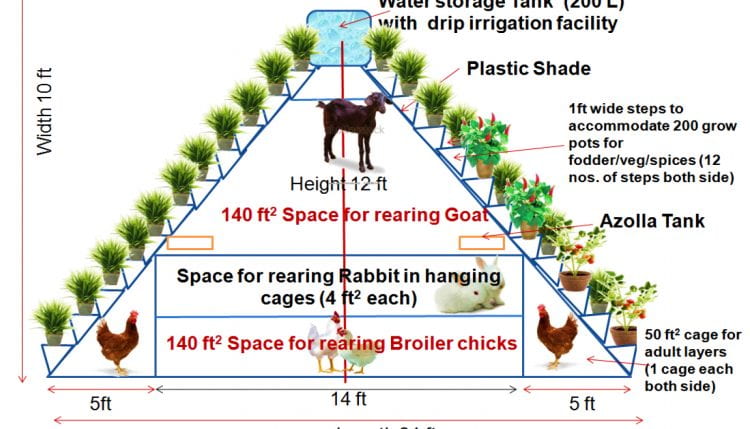
The vision of productive urban landscapes is horizontal and vertical.
February saw the publication of the book chapter Implication of Urban Agriculture and Vertical Farming for Future Sustainability by Anwesha Chatterjee, Sanjit Debnath and Harshata Pal. It takes stock of global urban agriculture thought and practice as well as envisioning a sustainable food-focused urban future for Indian cities. Of interest to us is the strong, seemingly normalised, perception of the need to interlock vertical and horizontal farming when ‘ensuring food security in India and around the world in the future’.
The authors from West Bengal highlight the opportunities of urban agriculture to compliment rural agriculture and engage in the discussion of land use zoning stating that ‘scientists visualized the “edible city” and introduced the concept of continuous productive urban landscape (CPUL), recommending the coherent introduction of interlinked productive landscapes into cities as an essential element of sustainable urban infrastructure. One major challenge of urban food production is land availability and access. Principally, there might be large resources of land that could be made accessible for agricultural purposes, but for densely built-up areas and where availability of space often limits the area of production unit, no-space or low-space technologies provide opportunities for space-confined growing’.
Also in February, Fatemeh Kalantari, Ashkan Nochian, Faiza Darkhani and Nayeem Asif, researchers from two universities in Malaysia discussed the relationships between urban agriculture and food security in their article The Significance of Vertical Farming Concept in ensuring Food Security for High-Density Urban Areas. Again, the challenges of ‘enlarged and intense populations’ necessitate innovative approaches to urban food production. The paper discusses vertical farming as a response to meet these challenges, stresses the importance of location and layout of cities and states that ‘the idea of the edible city was introduced by Bohn & Viljoen (2011) who also coined the concept of Continuous Productive Urban Landscape (CPUL). They supported the idea of interrelated productive landscapes as an essentiality in realizing a sustainable urban system’. Whilst the term ‘edible city’, we believe, was first used in 2007 by Debra Solomon, curator of the exhibition The Eetbaare Stad at the Netherlands Architecture Institute (NAi), we entirely agree that an interrelated productive urban landscape is essential for sustainable future cities.
And, as Kalantari et al. conclude, ‘it is essential for cities to produce food for themselves as their [the urban residents’] participation would affect the change’.
The book chapter Implication of Urban Agriculture and Vertical Farming for Future Sustainability by Anwesha Chatterjee, Sanjit Debnath and Harshata Pal was published by IntechOpen, see here.
The article The Significance of Vertical Farming Concept in ensuring Food Security for High-Density Urban Areas by Fatemeh Kalantari, Ashkan Nochian, Faiza Darkhani and Nayeem Asif was published by Jurnal Kejuruteraan 32(1) 2020: 105-111, see here.
Image: Chatterjee et al. refer to this Integrated Vertical Farming System at Tripura, India, developed and live-tested by ICAR Research Complex. (source: Singh, A. KVK South Tripura 2015)
